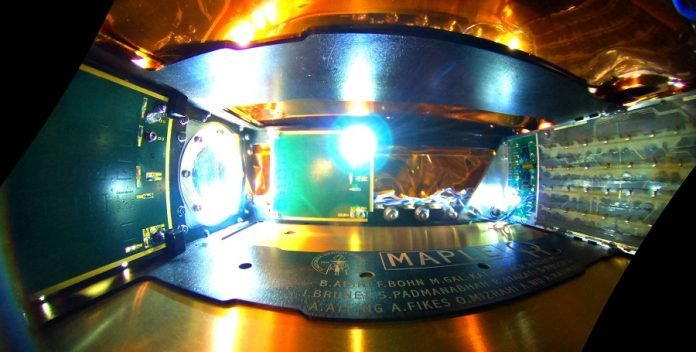
Caltech, a prestigious science and engineering institute, has made a breakthrough in space solar power technology.
Imagine a world where unlimited power could be harvested from the sun in space, and then sent down to Earth for use.
Sounds like a sci-fi movie, right? Well, Caltech is turning that movie into reality with their Space Solar Power Project (SSPP).
SSPP’s latest development is a prototype called MAPLE, which stands for Microwave Array for Power-transfer Low-orbit Experiment.
This prototype was successfully launched into space and has demonstrated for the first time that it can wirelessly transmit power both in space and to Earth.
MAPLE, built by a team led by Caltech professor Ali Hajimiri, is essentially an array (think of it as a big group) of lightweight microwave power transmitters.
These transmitters, using a technique similar to how your Wi-Fi router transmits internet signals around your house, beam the solar power they’ve collected to wherever it’s needed. Cool, right?
They even designed MAPLE to withstand the harsh environment of space, from super cold to blazing hot temperatures and high-intensity radiation from the sun.
Despite these conditions, the prototype was able to function properly and transmit power successfully.
A unique feature of MAPLE is its ability to change the focus and direction of the energy it beams out without any moving parts.
It uses something called constructive and destructive interference – a principle from physics that describes how waves, like light or sound, combine.
Using this technique, the transmitters can ensure most of the energy is sent exactly where it’s wanted.
If this wasn’t impressive enough, this technology could revolutionize access to power.
Since the power is being transmitted wirelessly, even the most remote regions and areas devastated by natural disasters could have access to reliable power without the need for traditional infrastructure like power lines.
This entire project was initially inspired by philanthropist Donald Bren, who, after reading about space solar power, saw its potential and decided to fund the project at Caltech.
Over time, Bren and his wife Brigitte have contributed over $100 million in support of the project. Northrop Grumman Corporation also provided support by funding the development of technology for the project.
The next goal for SSPP is to create a constellation of modular spacecraft that collect sunlight, turn it into electricity, then convert it into microwaves that can be transmitted wirelessly to Earth.
These units would be like large solar-panel sails that unfurl once they reach space.
The whole endeavor is a brilliant example of innovative technology solving real-world problems and has the potential to bring about a brighter future powered by renewable energy.
So, let’s all keep our eyes on the stars!



